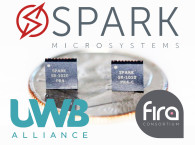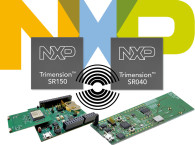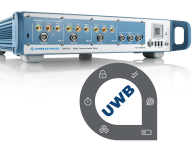
As a part of the new liaison, the UWB Alliance will focus on matters arising from the promotion and safeguarding of UWB technology and advancing updates of the UWB rules in the United States and the EU, while the FiRa Consortium will focus on UWB use cases specification, IEEE 802.15.4z interoperability and certification.
The UWB Alliance was established to foster the use of UWB technology solutions, promote industry growth and a favorable regulatory environment. In addition to promoting the visibility of UWB technology, the alliance has been working with law makers in Washington, DC and Brussels. It has already made progress on one of its key goals – ensuring effective interoperation and co-existence with other wireless standards. “This is a watershed moment for the UWB industry at large,” says Timothy Harrington, Chairman of the UWB Alliance. “Through our agreement with the FiRa Consortium, we can inspire an environment in which innovation for UWB products, applications and technologies flourishes, ultimately enlarging the total market.”
“By working in a collaborative manner with the UWB Alliance, the FiRa Consortium can continue to focus our efforts on the development and widespread adoption of seamless user experiences using the secured fine ranging and positioning capabilities of interoperable UWB technologies”, says Charlie Zhang, FiRa Consortium Board Chair and Senior Vice President Engineering, Samsung Research America. “The FiRa Consortium will promote UWB ecosystems, because technologies only endure when they’re backed by a robust, quality-driven infrastructure that enables rapid expansion.”
In order to promote greater efficiency and avoid unnecessary duplication of efforts, the UWB Alliance and the FiRa Consortium each believe that it will be mutually beneficial to coordinate regarding activities on new UWB matters as they arise, through liaison requests and liaison statements. This liaison also establishes a framework for sharing certain information within defined areas of mutual interest.
In the quest to increase the use of UWB technology, several companies have chosen to join both organizations, allowing them to take advantage of the strengths of each organization. Ultimately, the liaison agreement will leverage the best of both entities to the greatest benefit of the UWB industry, which they believe "is poised to become the next big wireless wave."
Since the introduction of its own Ultra Wideband U1 chip, Apple made the technology available in every single iPhone 11 model ever sold, and hinted at multiple possible applications, complementing Bluetooth and NFC technologies. This was a critical push for organizations that have been working on the technology for years without achieving notable results, to get their act together and start moving.

UWB Potential
During Apple's recent WWDC 2020 online event, Apple explained how to replace car keys using a combination of near-field communication (NFC) and UWB technologies, directly integrated into its own operating systems and services. The company also demonstrated that the new ability to exchange data much faster at the lowest possible power, complemented with precise short-range location of devices, is the reason why Apple is already exploring the technology. UWB, together with NFC and visual QR codes are all strong enablers for its latest App Clips concept, where users can quickly access a specific app, in a specific location, and make a payment, without having to install the full app, or give away personal information. Of course, Google hates the idea.

With the recent social distancing requirements imposed by the global pandemic, many companies are quickly adopting UWB technology and leveraging its sensor data collection, precise location and tracking capabilities to create personal safety and health tracking applications. The challenge is to quickly build an eco-system of compatible apps and hardware devices for those to work.
One of the main companies supplying UWB chipsets to smartphones and many other mobile devices is Ireland-based Decawave, which was recently acquired by Qorvo, another important RF chip supplier. Decawave’s Impulse Radio UWB technology allows for position accuracy of a few centimeters, with extremely low latency, and was deployed in millions of devices. The Decawave team has become the Ultra-Wideband Business Unit (UWBU) within Qorvo Mobile Products, and Decawave's CEO Ciaran Connell is now leading the UWBU team as its general manager. Decawave, and now Qorvo are supporting members of both the UWB Alliance and the FiRa Consortium.
The UWB Alliance is registered as an international nonprofit organization headquartered in Washington D.C., while the FiRa Consortium, is headquartered in Beaverton, OR, and acts more like a member-driven technical organization, acting in direct connection with other industry organizations, such as the IEEE, the Wi-Fi Alliance, the Car Connectivity Consortium (CCC), and others.
www.uwballiance.org | www.firaconsortium.org







